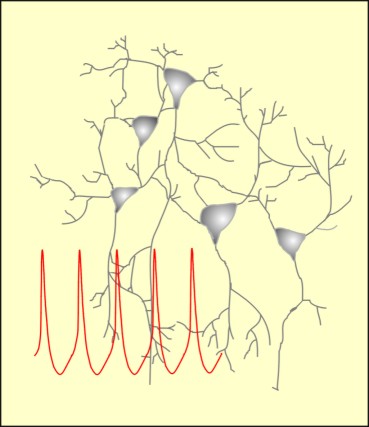|
Glial cells influence the regulation of voltage-gated Na+-channels by thyroid hormone in hippocampal neurons
A lack of thyroid hormone (T3) in the postnatal period causes an irreversible mental retardation, characterized by a slowing of thoughts and movements accompanied by prolonged latencies of several evoked potentials and slowed electroencephalographic rhythms. Our research group has previously shown that a lack of T3 down-regulates the voltage-gated Na+-current density (Nav-D) in hippocampal neurons of postnatal rats (Potthoff and Dietzel, 1997), leading to slowed action potential upstrokes and decreased firing frequencies (Hoffmann and Dietzel, 2004).
New data display that only neurons which have been cultured in the presence of glial cells show a regulation of the Nav-D by T3. Experiments using conditioned media indicate that the factor which influences the Nav-D in neurons is a soluble molecule secreted from glia cells rather than a membrane protein.
In the search for the secreted factor hippocampal neuron enriched cultures were treated with Progesterone and Corticosterone known to be released from astrocytes as well as bFGF and EGF which are released from astrocytes after T3 stimulation (Trentin et al., 2001). While EGF, Progesterone and Corticosterone did not alter the Nav-D for longer than two days after stimulation, bFGF showed a persistent influence on the regulation of voltage-gated Na+-currents.
Neutralization assays with anti-bFGF will further clarify whether this factor is identical with the glia-released factor responsible for the Na+-current regulation of T3 treated neurons in mixed cultures.
This is to our knowledge the first study showing that the Nav-D and thus neuronal action potential upstroke are to some extend under control of glial cells.
|
